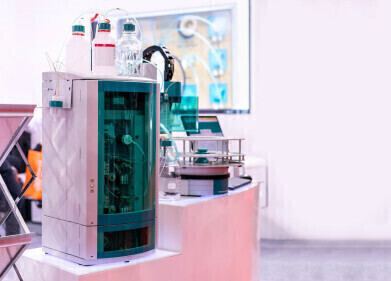Ion Chromatography (IC)
How to Reduce Arsenic Levels in Rice Using a Coffee Percolator
May 30 2016
Rice is part of the staple diet of half of the world’s population — providing a readily available carbohydrate source. But rice is also one of the primary sources of something else in the diet of many people — arsenic.
Rice can typically contain as much as ten times more inorganic arsenic than other foods — and it is this fact that led researchers to look for ways to reduce the arsenic content. So sit back with a cup of freshly percolated coffee and discover how UK researchers in Belfast have found a way to reduce arsenic levels in rice.
“Arsenic and Old Lace”
Known in the UK primarily to readers of Agatha Christie novels and Victorian dramas as the poison of choice alongside cyanide and strychnine — arsenic is actually a naturally occurring element in the Earth’s crust. It is found in the air, soil and water — in either an organic form (bound with carbon) or an inorganic form (no carbon present).
It is the inorganic form which is the more dangerous type when it comes to human health — with long-term exposure thought to cause cancer and heart disease. Food and drug authorities in Europe and the US monitor arsenic levels and their effect on human health — with an emphasis on rice, as ground rice is used as a major ingredient in infant meals.
As rice grows — submerged under water — it absorbs arsenic from the soil and water, the arsenic appearing naturally in the rice. There is no difference in the arsenic levels in organic or non-organic rice. Consequently, it would appear that there are no short term growing changes that could be made to reduce rice’s arsenic levels. So bring on the coffee percolator.
Percolate your rice
A team at Queen’s University in Belfast have been looking at ways of reducing the arsenic levels in rice and found that a percolating method was the most efficient. In a paper — Rethinking Rice Preparation for Highly Efficient Removal of Inorganic Arsenic Using Percolating Cooking Water published in PLOS ONE — they show how up to 85% of arsenic was removed from a variety of rice samples.
The team tried two percolating methods, one using a special lab set-up that distilled the cooking water so that it was constantly refreshed, and another that used tap water in a shop-bought coffee percolator. Both methods were equally effective at removing arsenic from the cooked rice — with ion chromatography used to measure the arsenic levels in the cooked rice. The use of ion chromatography is discussed in the article, Determining Inorganic Anions in Drinking Water.
In a press release, Andy Meharg, Professor of Plant and Soil Sciences at Queen's Institute for Global Food Security said:
“This is a very significant breakthrough as this offers an immediate solution to decreasing inorganic arsenic in the diet.”
The team are now developing a rice cooker based on a percolation system — soon we could all be eating safer rice.
Digital Edition
Chromatography Today - Buyers' Guide 2022
October 2023
In This Edition Modern & Practical Applications - Accelerating ADC Development with Mass Spectrometry - Implementing High-Resolution Ion Mobility into Peptide Mapping Workflows Chromatogr...
View all digital editions
Events
ACS National Meeting - Fall 2024
Aug 18 2024 Denver, CO, USA
Sep 04 2024 Chiba, Tokyo, Japan
Sep 04 2024 University of Warwick, Coventry, UK
Sep 10 2024 Rockville, MD, USA
Plastics Recycling World Expo Europe
Sep 11 2024 Brussels, Belgium














